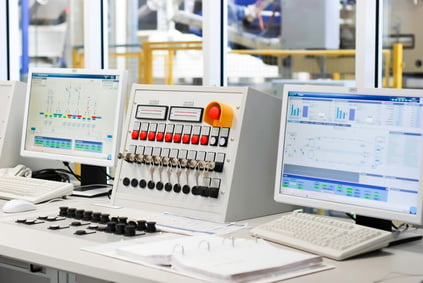This guest post is authored by Justin Robinson, a principal engineer at MAVERICK Technologies. Click this link to register for a free ISA co-hosted webinar on September 25 on ways to reduce risk during startup while increasing overall efficiency.
Waves of processing facilities and operating companies are in the process of adopting high-performance graphics for the first time. These projects can be extremely daunting due to both conflicting information about what constitutes high-performance graphics and the vast number of individual design decisions that will be made over the course of the project. Developing a cohesive, shared vision  within a project team upfront is essential for the project to be a success. Here is a list of questions that you must ask yourself before digging in to the hard work of making your new high-performance graphics a reality.
within a project team upfront is essential for the project to be a success. Here is a list of questions that you must ask yourself before digging in to the hard work of making your new high-performance graphics a reality.
What will the end-user think?
The biggest barrier to the success of a high-performance graphics project is lack of operator buy-in. High-performance graphics must serve the job task requirements of the board operator at all times. Establishing this reality with all of the stakeholders upfront can avert poor design decisions. Cramming additional data on a screen that does not support decision-making or action relating to the objective of a particular display will make the operator incrementally less effective and more frustrated. Avoid putting information on the display that an engineer or manager erroneously thinks the operator needs to see. The only way to do that is to involve operations up front.
What workload is this going to place on plant resources?
Developing a functional specification for the new displays as a whole, defining objectives for various graphics, and reviewing graphics as they are developed can be very time consuming for project stakeholders, who are already working full-time jobs. The success of the project, both from a quality and scheduling standpoint, requires that these resources be diligent in their participation while graphics make their way through the development process. If adequate resources are not available to steward the project through its various stages, impact to the project schedule and/or quality of the deliverables should be expected.
Startup and commissioning account for about 5 percent of all operations, but 70 percent of major accidents occur during these non-routine activities. Click this link to register for a free ISA co-hosted webinar on September 25 on ways to reduce risk during startup while increasing overall efficiency.
What philosophy will be applied to developing a graphic object library?
Vendor supplied HMI libraries will support most required functionality out of the box. However, every site will require some amount of deviation from the base package. As the amount of customization increases, so does the engineering and maintenance burden. Modern HMI software packages have essentially limitless customization potential, and we can write scripts and design objects that will address any situation. In the 1993 film Jurassic Park, the character Dr. Ian Malcolm could have easily been talking about process controls engineers when he said, “Your scientists were so preoccupied with whether or not they could that they didn't stop to think if they should.” Team members need to know upfront how far out on the limb of customization they should climb. A careful balance must be maintained between providing needed functionality and ensuring long-term maintainability. This concept applies to both the number and complexity of custom objects and scripts. Long term maintainability should be at the forefront of each team member’s mind as the project is executed.
How successful are current alarm management practices?
Speaking bluntly, poor alarm management practices will limit the mileage that you get out of your new graphics, even if the graphics implementation is otherwise excellent. Navigation in the new graphics will likely be faster and easier than ever, but that doesn’t help if an operator doesn’t know which of 10 (or 100) alarms to navigate to. Alarm management is often not addressed simultaneously with high-performance graphics upgrades. To get the most out of your new set of high-performance graphics, good alarm management practices should be implemented. If alarm management deficiencies are not addressed, then temper expectations accordingly.
Assessing the success of a project
There are several criteria one could choose from to determine success. For example, ergonomics, safety, reliability, and product quality are all big picture issues that an improved operator interface can potentially address. It is critical to understand the mission of the project in clear terms prior to beginning work. This will help project management and the team stay focused on tangible goals throughout the project effort. When the project has a clear vision, many of the detailed questions that arise throughout the course of the project will answer themselves.
About the Author Justin Robinson, P.E., CAP currently serves as a principal engineer at MAVERICK Technologies. Justin fills the role of Subject Matter Expert in the area of High Performance Graphics.
Justin Robinson, P.E., CAP currently serves as a principal engineer at MAVERICK Technologies. Justin fills the role of Subject Matter Expert in the area of High Performance Graphics.



